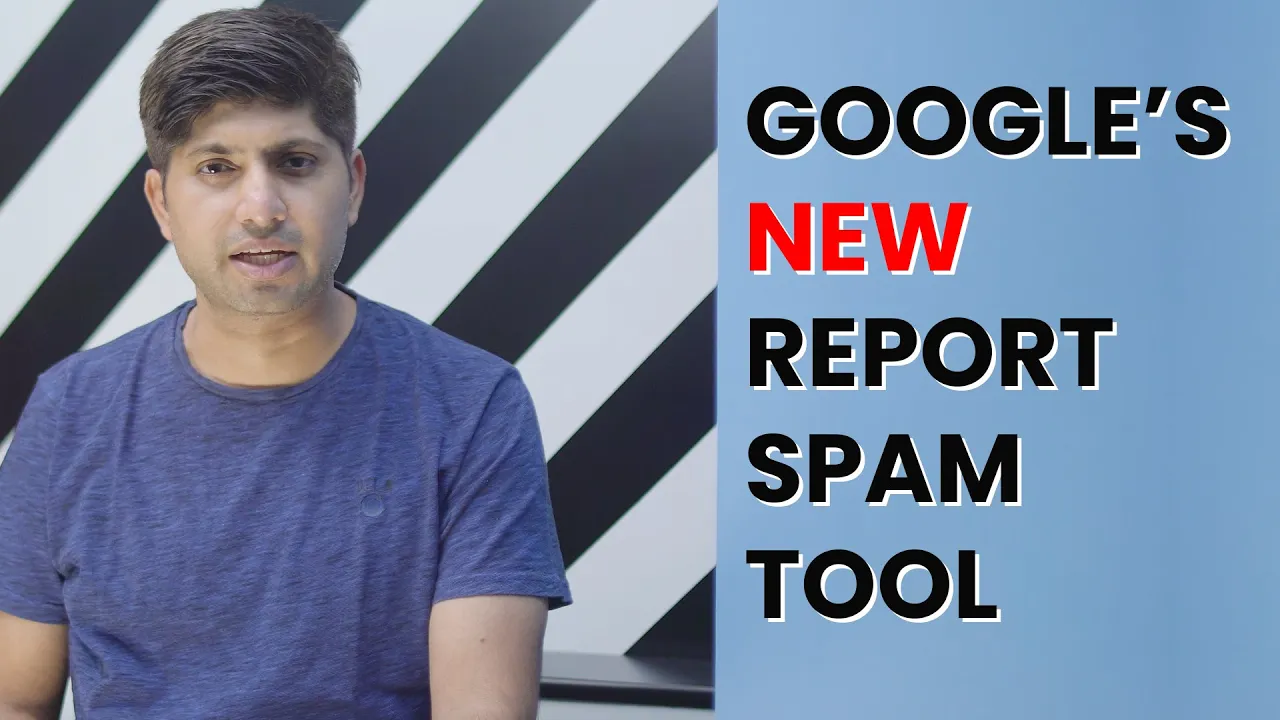While improved SEO skills should be appreciated, they should not be the end goal for businesses. In light of the new Report Spam Tool from Google, webmasters, and SEOs now have an effective tool for the effective solutions of spammy, misleading, and low-quality website issues. The present article will assess the workflow of this tool and its relevance to the practice of SEO.
Why a Report Spam Tool is Needed 🔍
Such issues as content scraping, keyword spam, and ever so many ‘content farms’ plague the digital space. The sad truth is that many websites have competitors that do the work in unethical ways, but there are no clear avenues to let Google know that foul play is persistent. The Report Spam Tool is a welcome feature due to the fact that it is tackling such longstanding issues.
Visualize having a competitor who has used your content without permission or without your content, unscrupulous papers manage to rank their sites. Fortunately, webmasters did not have many tools to address this issue. The new tool allows users to bypass such limitations and alert Google of such violators with views of the affected site being removed from search results.

How the Tool Works: Step-by-Step Guide 📝
Using the Report Spam Tool is straightforward, but it requires accurate completion to ensure that complaints are processed effectively. Here’s a step-by-step guide on how to use it:
Step 1: Accessing the Tool 🔗
The Report Spam Tool is part of the Google Search Console. You can access it through the following link: Google’s Report Spam Tool. Once there, you’ll see a simple form designed for submitting complaints.

Step 2: Entering the Page URL 🌐
As soon as you pop open the form, its first field instructs you to give in the URL of the page which you want to report. If you want to report more than one page, you may click on the “Add another URL” button which allows you to submit up to five URLs in one report.
In this case, we will take as an example a fictitious URL.
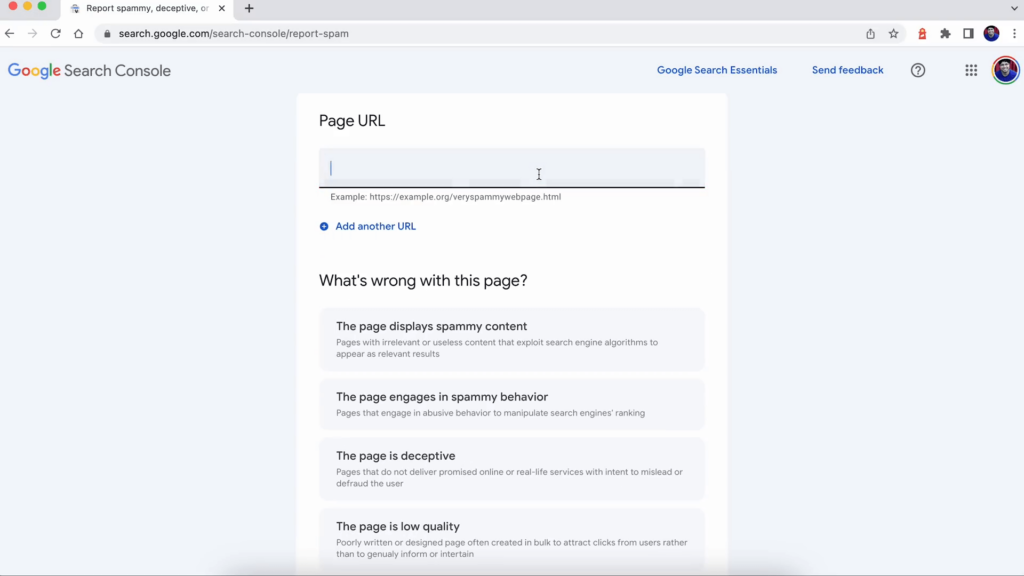
Step 3: Specifying the Problem 🚩
After you have entered the url, you will have to define, what the problem is in this case. The tool offers several elaborations:
Deceptive page behavior
Low-content quality
Content Copyright infringement
Spam like Keywords
Paid backlinks
Others
Choose the option which best reflects the issue in this case. It is very important to choose the most appropriate category to make sure that your complaint goes in the right direction.
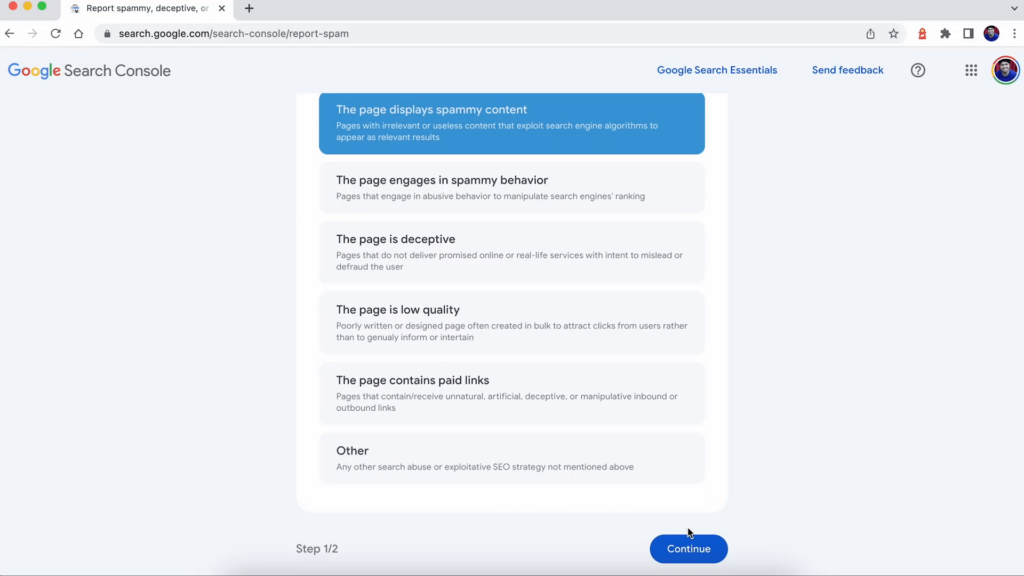
Step 4: Providing Additional Information 📄
After selecting the issue, you should complete the rest of the fields with more thorough and precise information. This is where you will be able to describe the problem thoroughly, with particular complaint details or problem behavior evidence.
The more compact and specific your explanation is, the higher the possibility of action from Google in response to your report. Moreover, this section is crucial for any issues that are difficult in complexity or are of multiple violations.
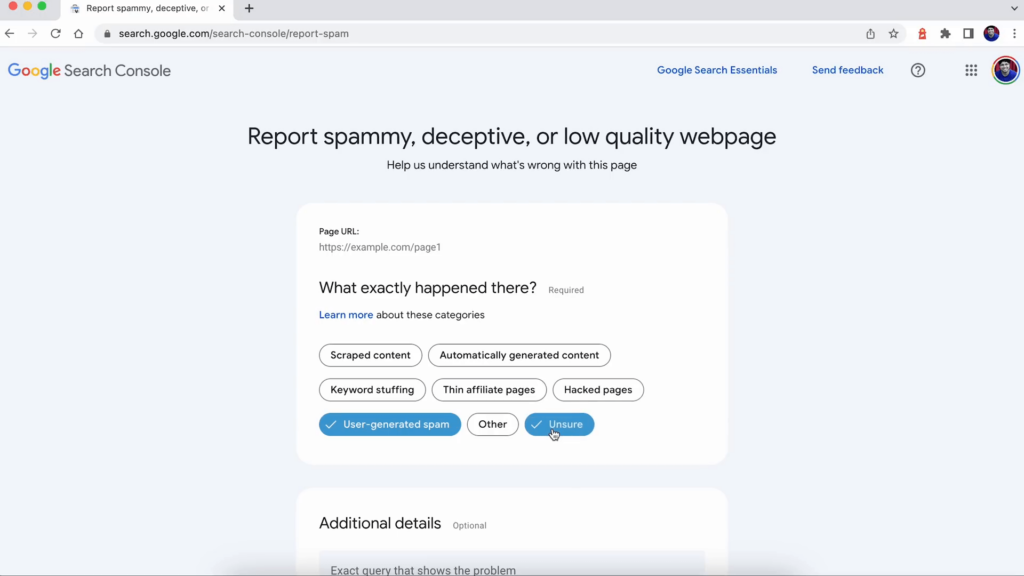
Types of Issues You Can Report 🆘
Through the Report Spam Tool, users are enabled to report issues that fall under several useful classifications. Here’s a breakdown of the main categories:
1. Poor Practice Content 🚨
If any content comes out on a particular webpage that could be misleading to the users or to the search engines, it can be reported. It includes such practices as cloaking or sneaky redirects when a user is presented with content that is different from what the search spiders have indexed.
2. Under-design Pages or Low-Quality Pages 🌪️
This is where poor design and little or no relevant information pages are reported. If you observe your rival website ranking because of such a page that is poorly created so that it can generate ad revenue, that would be a reason to take action.
3. Plagiarized Information 📋
This refers to any content that was taken from your site or other sites without obtaining permission. There are proprietor’s concerns over such activity and that it must be reported.
4. Spacing Harassment in Content 🔑
An illegal mannerism good in manipulating search ranking is the overstuffing of keywords in content. If you find a competitor engaging in this practice, you can still report this for investigation.
5. Buying or Selling Links 💰
A report can also be done on the websites that buy or sell links so that their ranking can change. As mentioned in the previous section, this violates the guidelines of Google and might make the website land in trouble.
Best Practices for Reporting Spam 🛡️
To achieve optimal results in your reports, you ought to adhere to these best practices:
Be Specific and Straight-Forward: Provide as much information as possible, but make sure the focus is on what the problem is.
Use Evidence: Whenever you can, include supporting documents with illustrations or relevant reports to substantiate what you are claiming.
Stay Professional: One should do away with emotions but rather stick to the facts of the issue.
Follow-up: Although you may not receive appropriate changes directly, pay attention to the issues reported and their repetitions.
The Impact of the Report Spam Tool on SEO 🌍
In the first place, the use of this tool affects SEO the most. In case an SEO agency operates in ethical ways and still has competition; other agencies who are unethical must be retaliated against. There is the potential of Google pulling down highly ranked offending sites, which will make web browsing better.
This tool also creates pressure on webmasters not to compromise low quality on the sites they manage. Understanding that responsible and unethical actions have a hotline for reporting can potentially create a respectable culture among SEO practitioners.
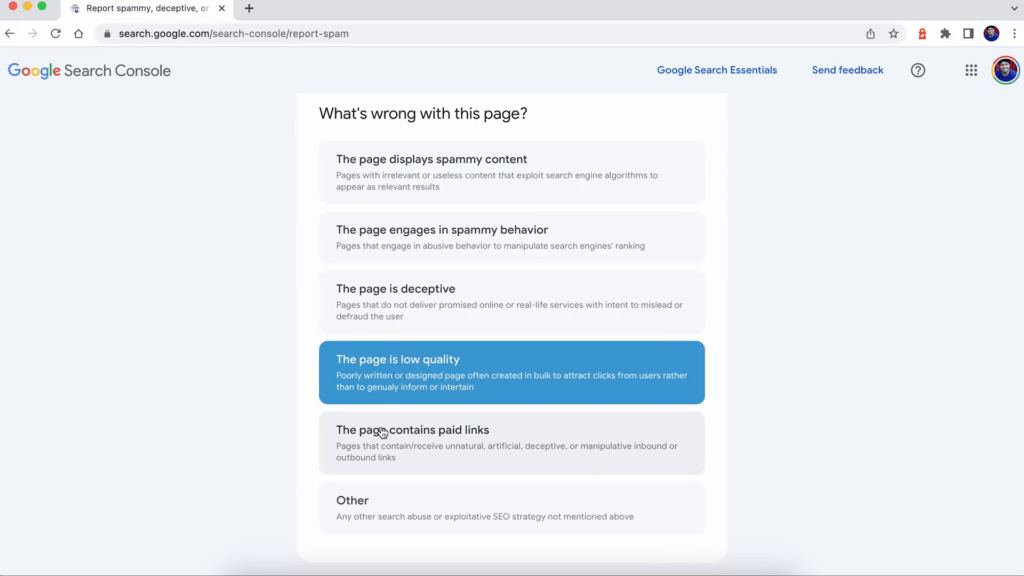
Conclusion: Embrace the Change 🏁
The launching of Google’s Report Spam Tool has marked a significant development in the world of webmasters and SEOs. When allowing users to report spam, it also allows them to contribute and help, as they see fit. As you begin using this tool, be sure to use the report function deliberately and appropriately.
Welcome this development and let’s build on the way forward in making the digital space much cleaner. For other questions and other requests, do not hesitate to contact us via the provided channels.

